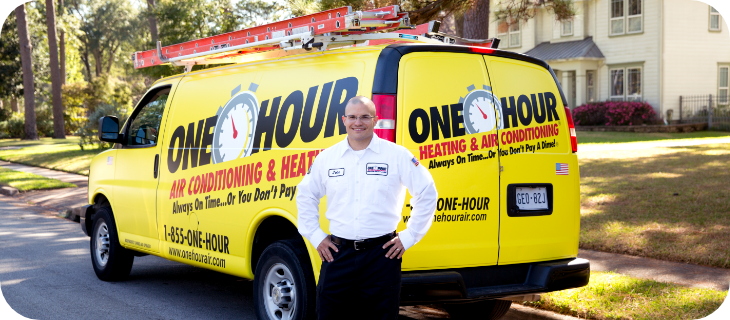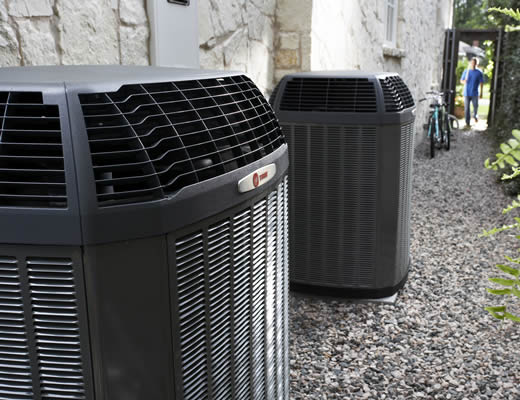Baton Rouge Air Conditioning And Heating

Living in Baton Rouge, we know how vital a functioning AC or heater is to your comfort. It's frustrating when your system isn't performing as it should. One of the most common complaints we hear is "My AC/Heater is blowing warm/cold air (respectively), or not blowing at all!" Don't panic! Before calling a professional, let's walk through some simple troubleshooting steps you can take yourself. We'll help you identify the issue and potentially save you time and money.
Step 1: Basic Checks (No Tools Required)
Start with the simplest things. These checks require no tools and can often resolve the issue quickly.
1. Thermostat Settings
This might seem obvious, but it's the most common culprit. Ensure your thermostat is:
- Set to "Cool" or "Heat" depending on the season.
- Set to a temperature lower than the current room temperature (for AC) or higher (for heat). Don't assume it's correct; double-check!
- Set to "Auto" or "On". "Auto" will cycle the system on and off as needed, while "On" will run the fan continuously. If your issue is a lack of airflow, try setting it to "On" to see if the fan is working at all.
- Check the batteries! A thermostat with low batteries might display incorrectly or fail to communicate with your HVAC system.
2. Air Filter
A dirty air filter is a prime suspect for airflow problems and can lead to your system overheating or freezing up.
Action: Locate your air filter (usually in the return air vent or near the indoor unit). Remove it and inspect it. If it's visibly dirty with dust and debris, replace it with a new one of the correct size. Replacing a dirty air filter regularly (every 1-3 months) is crucial for maintaining your HVAC system's efficiency and lifespan.
3. Circuit Breakers
Your HVAC system (both indoor and outdoor units) is powered by electricity. A tripped circuit breaker can cut power to the entire system or just a component.
Action: Locate your electrical panel (usually in the garage, basement, or utility closet). Look for the breaker labeled "AC," "Furnace," or something similar. If the breaker is in the "Tripped" (middle) position, flip it fully to the "Off" position and then back to the "On" position. If it trips again immediately, do not keep resetting it! This indicates a more serious electrical issue requiring professional attention.
4. Vents and Registers
Make sure all your supply vents (the ones blowing air) are open and unobstructed. Closed vents can restrict airflow and cause your system to work harder than it should.
Action: Walk through your home and ensure all vents are fully open. Remove any furniture or obstructions blocking airflow.
Step 2: Further Investigation (Basic Tools Might Be Needed)
If the basic checks didn't resolve the issue, these steps require minimal tools and a bit more observation.
1. Condensate Drain Line
Your AC system produces condensation. This water needs to drain properly to prevent water damage and system malfunction. A clogged condensate drain line is a common problem in Baton Rouge due to humidity and algae growth.
Tools Needed: Shop vacuum (optional), stiff wire or pipe cleaner.
Action: Locate the condensate drain line (usually a PVC pipe near your indoor unit). There may be a cleanout opening near the unit. Carefully disconnect the drain line (if possible) and use a shop vacuum to suck out any clogs. Alternatively, use a stiff wire or pipe cleaner to dislodge any debris. You can also try pouring a cup of vinegar down the drain line to help dissolve algae. Repeat until the drain line flows freely. If you're unsure where the drain line is or how to disconnect it, it's best to call a professional.
2. Outdoor Unit Inspection
The outdoor unit (condenser) plays a crucial role in cooling your home. Obstructions around the unit can restrict airflow and reduce efficiency.
Tools Needed: Screwdriver (potentially)
Action:
- Visually inspect the unit. Ensure there's no debris (leaves, grass clippings, branches) blocking the fins. Carefully remove any obstructions.
- Check the fan. Make sure the fan blades are not damaged or obstructed. The fan should be running when the AC is calling for cooling. If the fan isn't running, and you've already checked the breaker, there may be a problem with the motor or capacitor (see warning below).
- Inspect the fins. Over time, the fins can become bent, restricting airflow. You can carefully straighten bent fins with a fin comb (available at most hardware stores). Be extremely careful not to damage the refrigerant lines.
- Power Disconnect Box: Near the outdoor unit, you'll find a disconnect box. Ensure the handle is in the "On" position. Some units may have a fuse inside the disconnect. Carefully inspect the fuse (after turning the power OFF at the breaker panel). Replace if blown.
3. Checking for Ice
If your AC is running but not cooling effectively, and the air filter is clean, there's a possibility that the evaporator coil (inside the indoor unit) is frozen.
Action:
- Visually inspect the refrigerant lines near the indoor unit. If you see ice buildup, this is a strong indication of a frozen coil.
- Turn off the AC at the thermostat and set the fan to "On." This will circulate air over the coil and help it thaw. Do not turn the AC back on until the ice has completely melted. This could take several hours.
- Once the ice has melted, try turning the AC back on. If the coil freezes up again quickly, there may be a refrigerant leak or other underlying issue that requires professional attention.
Step 3: When to Call a Professional (Absolutely Necessary!)
If you've tried the steps above and your AC or heater is still not working correctly, it's time to call a qualified HVAC technician. Attempting to diagnose or repair complex HVAC issues yourself can be dangerous and could potentially damage your system further. Never attempt repairs involving refrigerant, electrical components, or gas lines unless you are a qualified technician.
Call a professional immediately if you experience any of the following:
- Refrigerant Leaks: Refrigerant is a hazardous substance, and leaking refrigerant requires specialized equipment and knowledge to handle safely. Signs include a sweet, oily smell near the unit, hissing sounds, or visible frost on the refrigerant lines.
- Electrical Issues: Repeatedly tripping breakers, burning smells, or exposed wiring are all signs of a serious electrical problem. Do not attempt to fix electrical issues yourself!
- Gas Leaks: If you smell natural gas (a rotten egg odor), evacuate your home immediately and call the gas company and your local fire department from a safe distance.
- Strange Noises: Loud banging, grinding, or hissing noises coming from your HVAC system could indicate a mechanical failure that requires professional attention.
- Frequent System Cycling: If your system turns on and off frequently (short cycling), it could indicate a problem with the compressor, refrigerant levels, or other components.
- Your System is Old: If your system is over 10-15 years old and experiencing frequent problems, it might be more cost-effective to replace it with a new, energy-efficient model.
- You're Uncomfortable: If you've tried the troubleshooting steps and are still uncomfortable tackling the problem, don't hesitate to call a professional.
Specific Considerations for Baton Rouge
Baton Rouge's hot and humid climate puts extra stress on HVAC systems. Keep these specific considerations in mind:
- Humidity: Our high humidity can contribute to mold and mildew growth in your HVAC system, especially in the condensate drain line. Regular maintenance and cleaning are crucial.
- Storms: Severe weather can damage outdoor units. After a storm, inspect your unit for any physical damage and clear away any debris.
- Pollen: Pollen season can wreak havoc on air filters. Change your filter more frequently during peak pollen periods.
Preventive Maintenance is Key
The best way to avoid HVAC problems is to schedule regular preventive maintenance. A qualified HVAC technician can inspect your system, clean components, and identify potential issues before they become major problems. This will help ensure your system runs efficiently, extends its lifespan, and keeps your home comfortable year-round.
Regular maintenance includes:
- Air filter replacement
- Coil cleaning
- Condensate drain line cleaning
- Refrigerant level check
- Electrical component inspection
- System performance testing
By following these troubleshooting steps and prioritizing preventive maintenance, you can keep your HVAC system running smoothly and comfortably in Baton Rouge's challenging climate. Remember, when in doubt, always consult a qualified professional.









